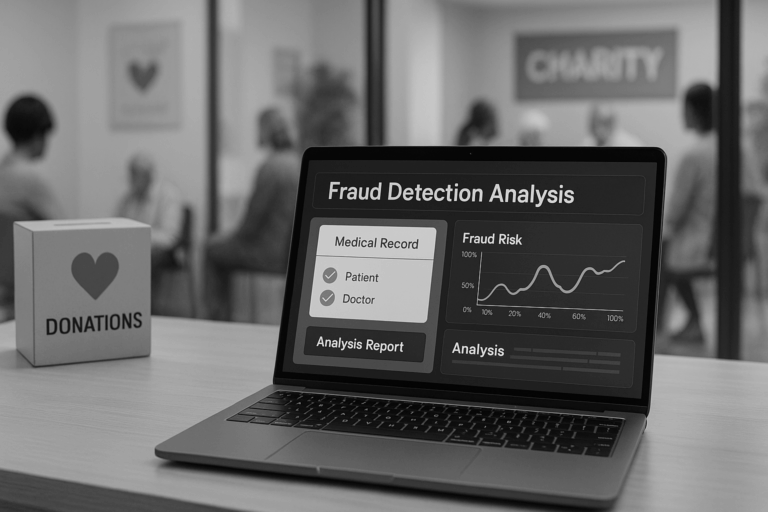
Have you ever received a message on your WhatsApp or email that required you to click a link and key in some important information? In most cases, such links are fake, but they might be difficult to notice as they often mimic a legitimate institution. This is just an example of the many threats that exist. And now that threat actors are always improving, the need to stay safe, not only in 2025 but also in the coming years, is very apparent.
You definitely do not want to be a victim of internet threats, given the exuberant costs you may need to recover from them. Plus, if you’re in business, you don’t want to imagine the pain of injuring your brand image just because of a data breach. Therefore, if you are wondering how to get started in this journey, worry less – this article has you covered.
What are some of the popular cyberattacks?
Phishing threats
Almost everyone has encountered these attacks. Just last year (2023), more than 90% of organizations experienced this kind of threat. And as if that were not enough, a write-up by Paubox found that 91% of all cybercrimes start with phishing emails, making it the most commonly used strategy by threat actors.
You may actually be surprised to learn that close to 3.4 billion fake emails are sent daily in an attempt to access users’ data. The emails will trick you into providing personal information by posing as reputable sources. In a time when tech improvements have become the order of the day, studies show that AI tools like ChatGPT have contributed to a 135% rise in phishing scams that are even harder to detect.
Here are the main target points:
- Gmail accounts because they are quite easy to setup
- Messaging platforms
- Spear phishing involves malicious emails that target specific organizations and individuals. Surprisingly, it accounts for about two-thirds of breaches.
- Whaling, which targets senior executives
Malware attacks
Short for malicious software, malware describes a wide category of harmful programs, ranging from Trojan horses and viruses to spyware, designed to disrupt your computer. Studies show that about 560,000 new pieces of malware are identified on a daily basis, with more than one billion malware programs in existence.
On top of that, Getastra highlights that about four companies fall victim to ransomware attacks every minute. In the past decade alone, the number of such attacks has increased by 87%, and it’s getting more worrying because cybercrime costs are expected to increase rapidly.
In ransomware attacks, you will need to provide a sum amount of money before you can access your computer system. A spyware threat, on the other hand, just as the name suggests, monitors and controls a computer’s use.
How to avoid these traps
Using strong passwords
According to Exploding Topics, almost a third of internet users have experienced data breaches because they adopted weak passwords. And worse still, a larger population of users uses similar passwords across multiple accounts, which can be really risky. Attackers today have evolved and you just don’t want to have your date of birth or first name as your password.
Most experts agree that a strong password has at least 12 characters, mixes characters, is not obvious and avoids memorable keyboard paths. To further strengthen the security of your accounts, you can adopt the multi-factor authentication approach. Studies show that this method can actually reduce exposure to up to 96% of bulk phishing scams and 99.9% of automated attacks. MFA accomplishes this by requiring users to provide at least two verification methods to access their accounts.
Updating software and operating systems
Remember, as much as hackers will do whatever they can to access your data, they are also looking for the path of least resistance. So, if hacking a particular server could put them at risk of being found, they may as well opt for what they find easy, like an old, unsupported operation system. By the way, do you actually know that, according to NinjaOne, about 32% of hacks often begin with an unpatched vulnerability?
Mark you: The operating system is the bread and butter for every single thing a user does. Therefore, its structuring and how it handles user permissions determine its areas of weakness. So, all an attacker will do is probe the system to find available opportunities to launch an attack, which is quite easy with unsupported operating systems.
Well, you may think that you are good to go as long as you are well-behaved on the internet. But that might not be the case. Threat actors often take advantage of crawlers on the internet to explore the vulnerabilities of each device. And since each device has an identifier to show which operating system it’s running on, an un-updated system becomes a juicy, red target to crawlers.
Parting words
Ever since accessing user data became possible with the rise of the internet, everyone, including malicious persons, has been scrambling for it. So, it would be unwise to think that taking a casual stand on your online security might not put you at risk.
Plus, the cost of recovering from cyberattacks is rapidly increasing, making online safety a very important subject, especially for online businesses. You do not want to suffer the consequences of losing customer confidence just because of data breaches. And now that acquiring new customers is becoming even more expensive, you can’t afford to make mistakes in this sector of online safety.



